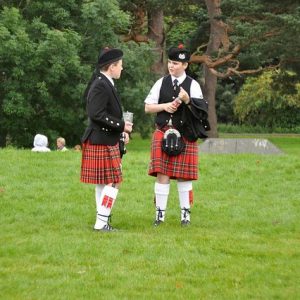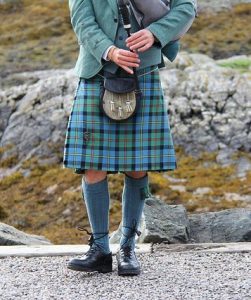Even if you have never visited Scotland, chances are that you have at least seen their famous kilts and the checkered patterns that are so characteristic of the Scots. However, did you know that those patterns have a wider purpose than merely being for showing off? They are indicative of the Scottish clan that the wearer belongs to, and if you did not know, clans are a very important distinction among the Scottish people. Here is a brief introduction.
What are clans?

The origin of the word ‘clan’ is Gaelic, meaning kin or family. Clans can be best described as being broad kinship groups among the Scottish people. However, having a lot of cousins does not necessarily make you a clan, as all clans need to be recognized by a formal institution, which, in this case, is the Court of Lord Lyon, the official institution for handling questions of heraldry and vexillology in Scotland. Also, it is important to note that not all clan members are directly related, even though they have the name of the clan as their last name. It was very common for clan members to take the surname of the chief of the clan, as a gesture of solidarity and loyalty. This practice became very popular in the seventeenth century.
Do all clans have a chief?
This question, although it may seem superfluous, is actually a very good one. Not all Scottish clans have a clan chief, and that is precisely the great difference among many of them. Just like the clans themselves, the clan chiefs need to be recognized by the Court of Lord Lyon, and any clans without officially recognized chiefs are named armigerous, and therefore considered not noble. A clan chief title is a symbol of nobility in Scotland, and it is the clan chief that grants his nobility to the clan. Without such a chief, armigerous clans do not have legal recognition in the country.
Do all clans have a tartan?

Tartans, as mentioned previously, are patterns on clothing that can either be checkered or with horizontal or vertical stripes. They are indicative of the clan that wears them. However, historically, there were no strict associations between clans and tartan patterns, and there are hardly any clans that have a single tartan to their name. The representation of clans using tartans is a custom that became popular during the reign of Queen Victoria. Originally, the tartans became common among clan members because the producers of cloth in a certain region favored the patterns that were popular among the local folk. Since the clan’s members usually occupied the same geographical area, a single pattern quickly became popular among all members of the clan, and as such paved the way for the recognition of clans using tartans.

